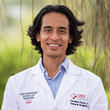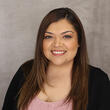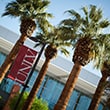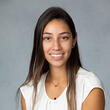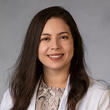Overview
The UNLV Pediatrics Residency Program is a three-year categorical training program based in Las Vegas, Nevada. Fully accredited by the Accreditation Council for Graduate Medical Education (ACGME), the program has participated in the self-study process and has had a 10- year site visit. One of the clearly recognized strengths of the program is its receptiveness to resident and faculty feedback. This characteristic is a pillar on which the program is built.
The program has an innovative curriculum that is structured to provide its learners a comprehensive educational experience. Highlights of the curriculum include:
- Didactics are in the academic half-day model
- Board review is incorporated into many didactics sessions and is done separately for the PL3 residents beginning in July/August of the academic year
- is simulation sessions with high fidelity simulators, standardized patients, and task trainers every two weeks
- Rotations in education, chronic disease, community, and advocacy
- Individualized curriculum for second and third year residents
- Wellness curriculum that complements that of the institution
The program is university-affiliated and has all of the advantages associated with being at a medical school. However, because the residents provide care to patients at a large, safety-net hospital – The Children’s Hospital of Nevada at University Medical Center and at a community hospital, Sunrise Children’s Hospital — they have the opportunity to gain clinical experiences that are highly diverse.
Program Director

Fateh Peera, MD, FAAP
Assistant Professor of Pediatrics and Residency Program Director
Explore Our Program
Curriculum
The focus of the first year (PL-1) is to differentiate between well, ill-appearing, and critically ill children. Four months of the year are spent in the inpatient setting divided between the two children’s hospitals. Additional time (two months) is spent learning about newborns both in the well-baby unit and in the neonatal intensive care unit. This is supplemented with a block each of adolescent medicine, emergency medicine, and endocrinology. The year is rounded out with two blocks each of outpatient and two subspecialties of choice.
The second year (PL-2) lets the residents begin to take on leadership roles in the inpatient setting, as they are now tasked with leading the team for three blocks divided between the two children’s hospitals. The residents will also be required to spend one block each divided between the outpatient setting, the intensive care unit, the emergency department, the community, and on developmental and behavioral pediatrics. The remaining blocks can be utilized to help each resident explore various areas of pediatrics that they believe will be helpful in their future and tailor their schedule to meet their needs.
The final year (PL-3) encourages residents to take ownership of their experience and develop a curriculum that meets both their educational needs as well as their career goals. Opportunities for electives and completing their individualized curricula are the primary emphasis. However, residents also spend time as the inpatient senior for two blocks, one at each children's hospital, two blocks in the intensive care units (both general and neonatal) and a block each in the emergency department and the outpatient clinic.
Throughout all three years of the curriculum, residents attend their continuity clinic at the UNLV Health Pediatric Clinic. Accompanying the continuity clinic experience is a well-organized curriculum that rotates and repeats over the course of the residents’ training. During years one and two, all residents are required to see general pediatric patients at the UNLV Health Pediatric Clinic. However, if residents are pursuing subspecialty training and they wish to have a continuity experience in their subspecialty, they are able to arrange an outpatient longitudinal clinic in that venue. Advanced planning is required.
All residents participate in a quality improvement (QI) curriculum and are required to complete a QI project either individually or in a team/group. In addition, all residents are required to complete a scholarly project. They have the opportunity to select from a menu of options that includes but is not limited to case reports, research, or academic grand rounds. Publications and/or presentations at local, regional, or national meetings satisfy the requirement. In the years since the projects have become required, there have been approximately 30 resident presentations/publications each year.
Block Schedule
Program Leadership
Resident Life
Advisor/Mentor Program
- During the first six months of residency, the program director and associate program directors will provide advising and mentoring until the intern feels comfortable choosing their academic advisor. Numerous social activities will be scheduled throughout intern orientation and the year to allow new residents to meet faculty.
- By January of intern year, residents will have the opportunity to choose an academic faculty advisor who will meet with the resident at least biannually, but typically quarterly throughout residency to provide any resources and support needed for success.
- Core and community faculty are also always available as mentors to assist resident career decisions. They are eager to participate in resident career and personal development.
Wellness
- The program’s wellness initiative is multipronged. It consists of a curriculum presented in didactics with various activities and speakers, a wellness committee focusing on social events, and planned class retreats.
- The program works with the medical school’s director of wellness for yoga, meditation, breathing exercises, and relaxation strategies.
- Wellness activities over the past few years have included: holiday potluck lunches with white elephant gift exchanges, weekend-long retreats for each class, and yoga and meditation during didactics.
- Interns are also call-free on Friday nights for the first half of the academic year. Intern classes in the past have used this opportunity to do group activities together.
Resident Families and Committees
- Beginning in July 2018, the residents have worked together to form 13 families composed of a PL1, PL2 and PL3. They will serve as one of the core programs in the wellness initiative. The families serve to provide guidance to new interns and support amongst themselves.
- Residents also have the opportunity to join House Staff Committees. These committees include community outreach, organizing social events, quality improvement, recruitment, and many others.
Life After Residency
Why Come to Las Vegas for Residency?
Las Vegas is one of the fastest growing cities in the nation and provides opportunities for different activities you might be interested in, both indoor and outdoor. If you love activities such as shopping, concerts, shows, hiking, bowling, sports, boating, or anything else, it can all be found here in the city. Not only does it provide you with countless opportunities, it allows you to work with a diverse population from a clinical standpoint. Our patients come from all over the world as tourists, immigrants, or refugees and speak many different languages. We pride ourselves in multiple clinical opportunities, but also in the different cultures we serve. Las Vegas will give you a well-developed training environment while allowing you to blossom as a physician and an individual. Joining the Kirk Kerkorian School of Medicine at UNLV is one of the main highlights of our program. Clinical and research opportunities will expand greatly, providing us with the avenue to impact our community further.
Here’s a closer look at what makes Las Vegas so unique:
Training Sites
Children's Hospital of Nevada/UMC
UMC is a county-owned acute care medical center with 545 beds, housing Southern Nevada's only Level I Trauma Center and the state's only Burn Care Center. Pediatric services include a 29 bed General Pediatric Unit, the Neonatal Intensive Care Unit with 26 Level III and 10 Level II beds, and a 14 bed Pediatric Intensive Care Unit. The Pediatric Emergency Room and all inpatient pediatric facilities are located in a free standing building shared with the Trauma Intensive Care Unit, with the exception of the NICU and newborn nursery located in the main hospital with labor and delivery.
Sunrise Children's Hospital and Medical Center
Sunrise Children's Hospital is an investor-owned hospital with 688 beds. It houses a free-standing, state-of-the-art pediatric tower consisting of a 32 bed General Pediatric Unit, a 15-bed Pediatric Intensive Care Unit, and a 9-bed Hematology/Oncology Ward. The Neonatal Intensive Care Unit has 44 Level III beds and 10 Level II beds.
Sunrise Children’s Hospital is located on the same campus as Sunrise Hospital & Medical Center – Nevada’s largest acute care facility and level II trauma center. Sunrise Hospital and Sunrise Children’s Hospital is an 834-bed facility.
UNLV Health Pediatric Clinic
The UNLV Health Pediatric Clinic is the university-operated pediatric clinic located adjacent to UMC Hospital. The current site holds both general pediatrics and sub specialty clinics including pediatric gastroenterology, pulmonology, endocrinology, infectious disease, and adolescent medicine. All residents have their continuity clinic at this site one half-day per week. This clinic primarily serves central Las Vegas and North Las Vegas communities.
The Kirk Kerkorian Medical Education Building
The Kirk Kerkorian Medical Education Building was completed October 29, 2020, and is a state-of-the-art, 135,000-square-foot building for our medical students and residents. This building is certified LEED Silver and provides optimum learning opportunities with standardized patient rooms, a simulation suite, virtual anatomy classrooms, and a prosection lab. The building also houses an open forum for large gatherings, a learning resource center operated by UNLV Libraries, as well as a cafe, wellness center, outdoor terrace, and walking trail for medical students and residents.
Grant a Gift Autism Foundation Ackerman Center
The Grant a Gift Autism Foundation Ackerman Center provides clients with a multidisciplinary team of physicians, psychologists, and speech and behavioral therapists for a comprehensive diagnosis, treatment plan, follow-up care and support services.
